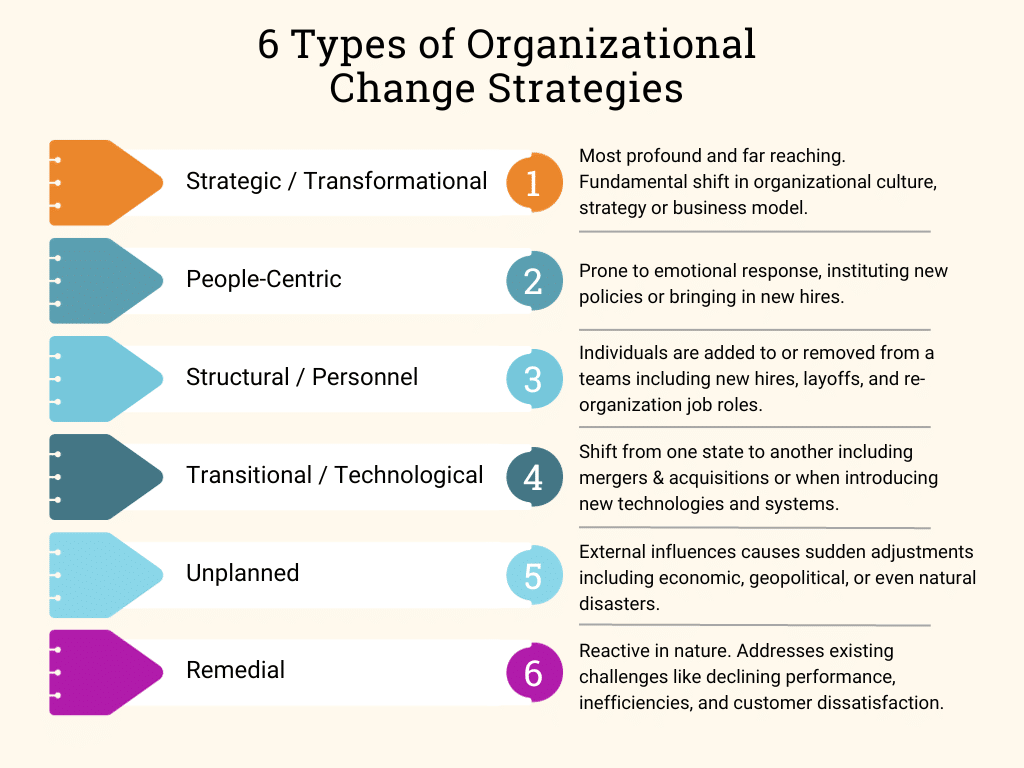The only constant in life is change – a truth that extends its hand even into the workplace. The ever-evolving nature of work demands that companies adapt swiftly to remain relevant. I know change management can feel like trying to tame a wild river. The good news? It doesn’t have to be an impossible challenge.
In this article, I surface ways to successfully navigate workplace change. Explore the varied landscapes, while equipping you with tools to shift and embrace the mindset of continuous improvement. So, if you’re ready for a mindset shift — from daunting to doable. By grasping the dynamics of change, you’re unlocking a better way to manage it and creating a workplace that embraces evolution with open arms.
Surfacing change management needs in the workplace
Change can be seen in multiple forms in the workplace. From shifts in company culture to personnel changes or implementing new technologies, understanding how to recognize alterations is necessary for effective management. Businesses should create a system for analyzing and observing changes to identify potential issues before they become more serious. This system collects data on emerging trends and helps interpret this data. By doing this, organizations will better comprehend how these modifications could affect roles, teams, and the enterprise.
When attempting to detect a change in the workplace, data collected can signal something has shifted or is about to shift. Examples include adjustments to employee sentiment, increased regrettable attrition, changes in customer churn, or shifts in productivity targets. Attention to such indicators can give companies an advantage when preparing for further changes and allow them to adjust their strategies accordingly.
Companies should be proactive rather than reactive in recognizing how different types of change can affect them and their employees. By considering the potential repercussions of alterations in a company, leaders can slightly shift execution plans without pivoting strategy. With early recognition and proper planning, companies can shift reactive linear change management projects to an ongoing state of continuous improvement. Companies that adopt this shift will remain competitive while managing transitions with minimal disruption.
How change impacts performance
It’s important to consider how company shifts may affect performance, both in the short and long term. Companies that manage ongoing change properly consider potential impacts on employee morale, communication between team members, and operational efficiency. Businesses can optimize their performance over time by considering all these factors when dealing with change.
Crafting a thoughtful change resiliency plan
Workplace changes come in various forms, each requiring a tailored approach. Companies encounter multiple changes simultaneously, spanning strategic, people-focused, structural, technological, unplanned, or remedial aspects. To navigate this array effectively, a change resiliency plan steps in. This plan equips companies with insights into diverse strategies for handling change and how to execute them depending on the specific type.

7 Steps to Launching An Effective Change Management & Resiliency Plan
A well-developed strategy and aligned plan pave the way for successful outcomes by outlining the implementation process, minimizing disruptions, and maximizing benefits for everyone involved. Here are recommended steps to launching an effective change management plan.
(1) Understand the Need for Change
Understand the purpose of the proposed change and why it is necessary. Whether adopting new technologies or restructuring processes, outlining the reasons behind the change helps employees grasp its importance. Assess the risks associated with the proposed change and evaluate potential outcomes. Before making changes, organizations must consider any potential impacts on employees, team dynamics, communication systems, operational efficiency, and customer satisfaction.
(2) Build a Change Management Team
Assembling a dedicated team to lead the change effort is crucial. This team should consist of individuals from various departments, providing diverse perspectives and expertise to guide the process effectively. Including employees in decisions can build morale and trust, making it easier for employees to accept changes without resistance or disruption.
(3) Assess the Current State
Before implementing any change, evaluate the current state of the organization. This assessment provides insights into existing strengths, weaknesses, opportunities, and potential threats. In the assessment, map out the forces driving change, such as new technologies, market trends, and customer expectations. Note who in the workforce may be resistant to change and why. This data can help proactively educate employees about the positives and provide support to ease their concerns. Highlight known talent gaps. Insufficient training can hinder the adoption of new processes or technologies. Offer comprehensive training to empower employees to embrace change confidently. Lastly, the assessment should note current resource levels and answer, “Do you have enough finances, personnel, and technology, allocated to support the change?” Inadequate resources can hinder the process.
(4) Execute Change Management in Phases With Regular Progress Evaluation
Implementing phased changes prevents overwhelming employees. Rolling out changes gradually allows employees to adapt without disrupting daily operations. Each phase should have clearly defined objectives which include calculated risk. Having goals with calculated risks keeps teams open to new ideas strategically. Taking calculated risks along the way will prevent individuals from jumping blindly into untested waters. Establishing achievable goals and milestones creates a roadmap. KPIs help measure the success of the change initiative. Whether it’s improved efficiency, increased sales, or enhanced customer satisfaction, KPIs provide tangible benchmarks. This minimizes resistance and confusion. Change is ongoing. Continuously gather feedback and data and use them to refine the future change phases. Continuous evaluation helps organizations identify issues proactively. Throughout each phase, take time to recognize and celebrate the achievements made. Celebrating wins boosts employee morale and reinforces the positive aspects of the change.
(5) Be Transparent in Employee Communication & Engagement
Employees are the driving force behind successful change. Open and transparent communication should be a two-way street. Encourage employees to share their thoughts and concerns, making them feel heard and valued. Create employee listening channels. Regularly update employees about the change and address their fears, highlighting its benefits. Engage employees throughout the process to provide buy-in and alleviate resistance. Good change communications always provide clarity for employees on what, why, and how something is occurring and how it will directly impact them.
(6) Develop a Change Resiliency Muscle
The ability to welcome change is essential. Company culture and leaders need to nurture a space for continuous learning. Leaders increase their capability to become change-resilient when they view every challenge or setback as an opportunity to learn and grow. Becoming change-resilient requires flexibility. The Center for Creative Leadership (CCL) notes that leading through change requires first managing yourself. Knowing your emotions and behaviors in response to the change is important to note ahead of leading others. CCL outlines different leadership flexibility traits that, when applied, can guide teams through change successfully. Leaders with cognitive flexibility can blend different thinking methods to make smarter decisions and adjust to new situations. Emotional flexibility, often overlooked, allows leaders to handle their emotions and their team’s feelings adaptively, making transitions smoother. Dispositional flexibility lets leaders stay optimistic yet realistic, turning change into an opportunity rather than a challenge
(7) Nurture a Digital Workplace Mindset
For workplaces to shift from linear change management practices to embrace continuous improvement requires the right people, process, and system capabilities. Each of these three areas needs to be addressed within a change strategy. A weakness in one can become a burden that slows everything down. In a recent LinkedIn post, Steve Goldberg noted the importance of leveraging HR technology to improve change readiness. He suggested workplaces rethink how they use technology to increase process & people effectiveness. Steve provides examples of how technology can obtain and analyze targeted & conversational assessments, AI-powered sentiment analysis, and stakeholder listening tools. Also, employee service delivery tools can reduce the time employees spend on administrative work that doesn’t impact business goals. When budgeting for technology, leaders can make the mistake of considering digital workplace line items as spend. Instead, leaders need to shift to think of these as investments in the future success of their organization. Without the capability to embrace ongoing change, businesses will become obsolete.
After conducting your employee journey audit, this next phase of digital transformation requires a mind-set shift in how work gets done in this innovation economy. In context of traditional employee support delivery, say goodbye to traditional knowledge-base channels like filing cabinets, electronic document storage, intranet, phone calls, help desk, email inbox, email distribution and most recently — Slack Channels and Microsoft Teams Groups. To stand-up an AI digital employee experience (DEX) platform. requires a strategic change management action plan resulting re-defining people, processes, and systems.
Check back for the next chapter of digital transformation journey series: “The Guide to DEX Solutions: Use Cases, Values, Features” will be pubished on Thursday, September 28, 2023.
